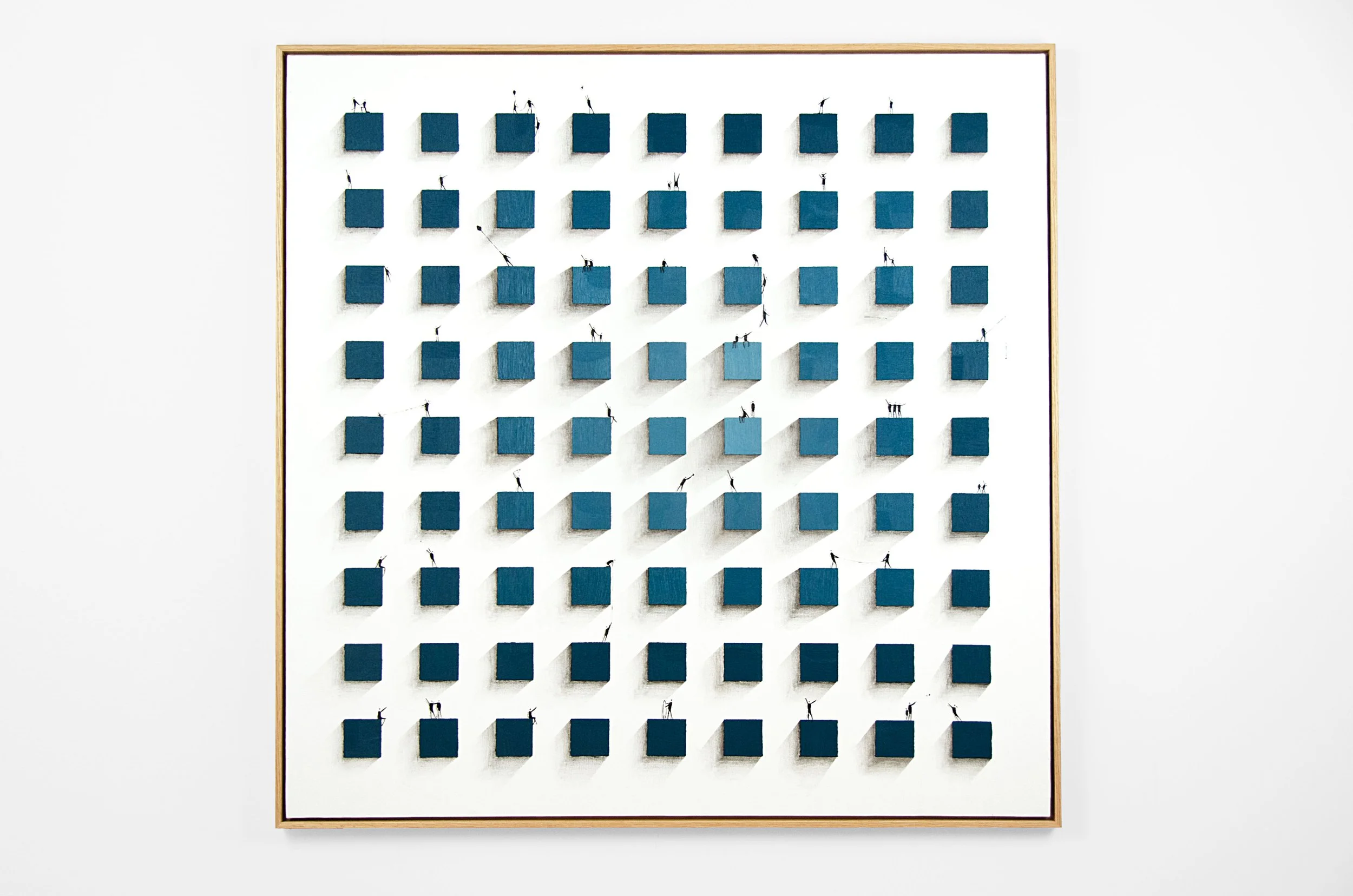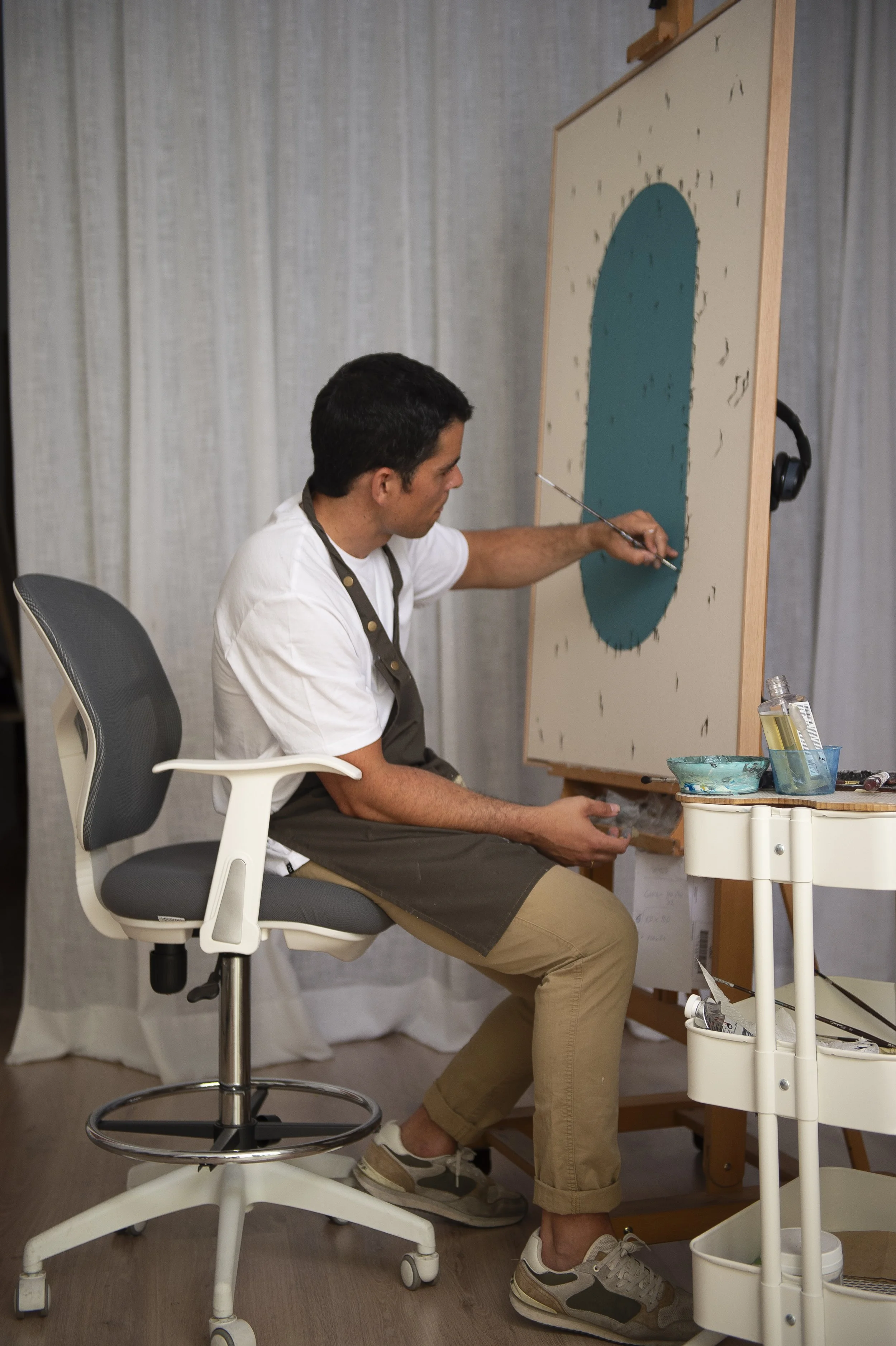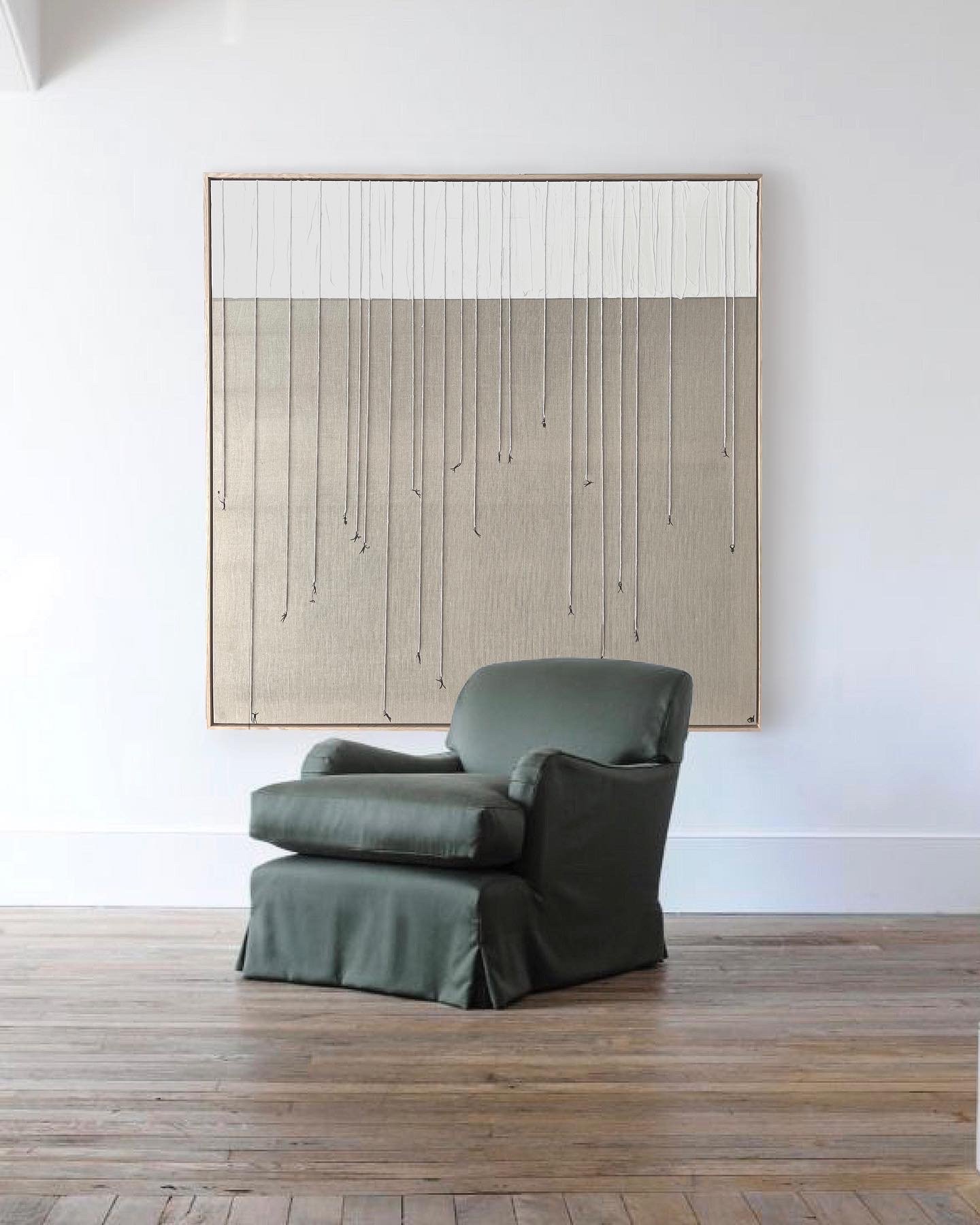Interview with Jaime Monge
As an architect with a strong background in design and creativity, what inspired you to transition into the world of painting, and how do you feel your architectural training has influenced your approach to art?
The main reason to transition into the world of painting would be the freedom to express my ideas without the limitations that I might have found in architecture. Being so, I would say that architecture gave me the tools to express myself artistically.
Your paintings are noted for containing elements of architectural design, such as proportionality, stability, and simplicity. Can you elaborate on how these principles manifest in your artwork and how you balance them with the more creative, subjective aspects of your work?
As I have mentioned before, as an architect, I have cultivated my ability to articulate ideas within the fundamental principles of architecture. This has resulted in my creative freedom being somewhat constrained by these architectural underpinnings. Gradually, I find myself more effortlessly liberating my creative essence; nonetheless, navigating this process proves challenging given my deeply ingrained technical education. Nevertheless, I perceive my association with architecture as an inherently positive and symbiotic relationship. It serves as both a structured framework and a boundless canvas, wherein the fusion of technical prowess and artistic ingenuity converges, giving rise to a harmonious synthesis of form and function.
In your transition from architecture to painting, how has your understanding of people's emotions and desires, gained from designing living spaces, influenced the way you express emotions, experiences, and memories in your art?
As an architect, my aim has always been to understand what people want in their life projects and translate those needs into designs that are both efficient and easy to grasp. I see a similar connection in art. Artists express their feelings, and it's up to the audience to connect with and understand those emotions. While some artists may embrace complexity, I prefer simplicity. I enjoy expressing my ideas in a straightforward way, making it easy for people to connect with and understand. In blending architecture and art, I find a sweet spot where clear communication meets emotional resonance, creating designs that go beyond just structures and speak to the human experience.
You've mentioned that the silhouettes in your paintings represent different experiences you wish to convey. Can you share more about your process of choosing these silhouettes and how they help in storytelling through your art?
Silhouettes play a key role in my art. I want people to feel like they're the ones creating the spaces because, in the end, they're the ones living in those landscapes.
In my paintings, I like filling the scenes in a way that lets people be the ones shaping the landscapes. I aim for the architecture to take a back seat, creating a space where viewers can imagine themselves and bring the scenes to life. By keeping the architectural details minimal, I hope to highlight the connection between people and the environments they find themselves in. It's about making the art more personal, inviting everyone to join in and be part of the visual story.
How does your use of 3D (axonometric) vision in your paintings reference architecture, and in what ways do you intend for this to influence the viewer's interpretation of the scene?
When I employ architectural language, my intention is to use familiar tools that people encounter in their everyday lives, fostering an immediate connection. I aim for the silhouettes to exist both within and beyond the canvas, creating a seamless integration of the artistic narrative into the viewer's lived experiences. The use of recognizable elements from daily life serves as a bridge, inviting individuals to effortlessly engage with the artwork, as the silhouettes resonate with their own encounters in the external world. In this way, the artistic expression becomes a fluid extension of the viewer's reality, blurring the boundaries between the canvas and their own surroundings.
What has been the most surprising or rewarding feedback you've received from people who appreciate your art? How do their interpretations align or differ from the stories and emotions you aim to convey?
My desire is for each person to connect with the artwork in a unique and personal way. While my ideas have a personal concept, I intentionally leave room for interpretation, allowing individuals to envision what the piece means to them. Ultimately, the artwork will find a home with someone who will live with it for a long time, and my intention is for it to hold significant meaning for them.
One of the most touching experiences was with a client who teared up when I explained the concept behind one of my pieces. For them, the concept held a profound connection to a significant aspect of their life. This emotional reaction underscored the power of art to resonate on a deeply personal level and reinforced my commitment to creating pieces that can evoke meaningful and individualized experiences for those who live with them.
Could you walk us through your creative process, from the inception of an idea to the completion of a painting? How do you decide which experiences or memories to depict?
Initially, I'd say that I try not to be too stringent in selecting which ideas or memories I represent. I believe that the creative process is a tool honed and nourished by our ability to express emotions and ideas, so every expression contributes to improvement.
Once I settle on an idea to depict, the next step might involve approaching the canvas and figuring out how to translate it using my artistic language, often intertwined with the fundamental principles of architecture. Once I start painting, the easiest part unfolds—letting myself be carried away by the creative flow. This phase becomes an intuitive journey where the chosen idea takes shape on the canvas, guided by both my artistic instincts and the unique interplay between my architectural background and the emotive core of the subject matter.
Transitioning from architecture to painting must have presented some challenges. What were some of the biggest obstacles you faced in this transition, and how did you overcome them?
Making the switch was tough because, even though I always painted as a part of my life, turning art into a career felt more like a dream than reality. Transitioning from the stability of architecture to the emotional rollercoaster of art was scary.
I think there are always obstacles, but they're what make your artistic journey meaningful. Shifting from the structured world of architecture to the more unpredictable realm of art brought a lot of uncertainties. Yet, facing those uncertainties turned out to be opportunities to grow and discover more about myself. The transition became like a story, with each challenge shaping my unique path as an artist.
Looking forward, how do you see your work evolving? Are there any new themes or techniques you are eager to explore in your future paintings?
Looking ahead, there are many techniques I want to explore because I have thousands of ideas that I haven't quite captured yet. However, my theme will always be rooted in the person as the guiding thread of my narrative. The exploration of new techniques becomes a means to further amplify the expression of human experiences in my work, allowing for a dynamic and evolving artistic language that remains deeply connected to the core theme of personal connection and narrative.
Finally, for individuals who may be considering a similar transition from a professional field into the arts, what advice would you give them based on your own experiences?
For anyone wanting to dive into the art world, I'd say go for it, but be aware that "art" is more than just creativity – it's a professional landscape that requires a lot of hard work and planning. You've got to be ready to put in the hours, even if there's no immediate payoff; that's the most important part. No risk, no reward. Taking a leap into the art scene means embracing challenges and staying persistent, much like navigating through the twists and turns of a canvas and a career.









